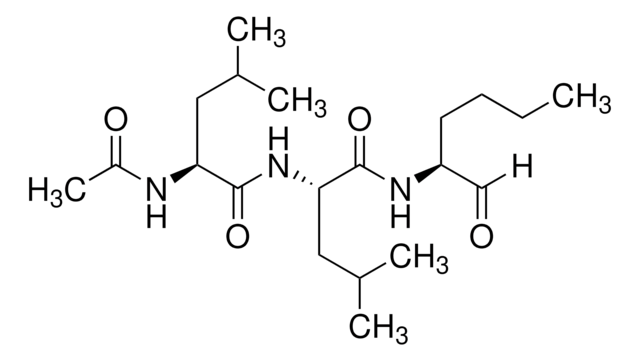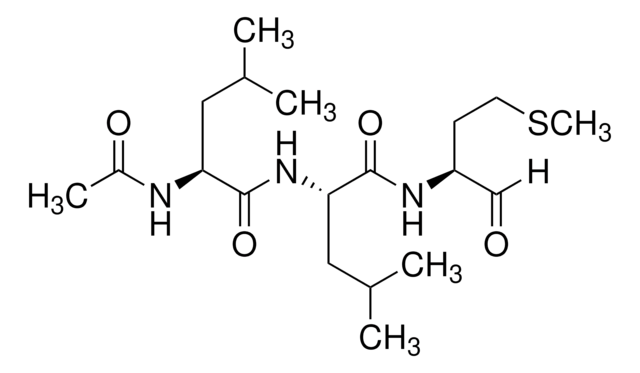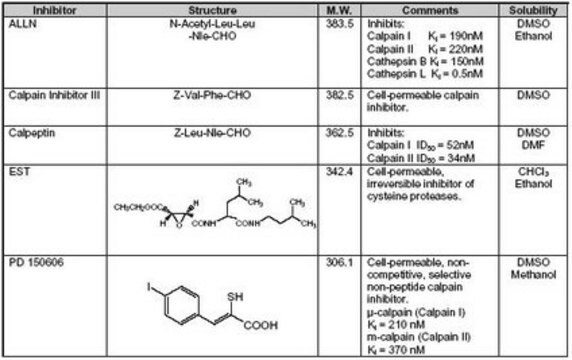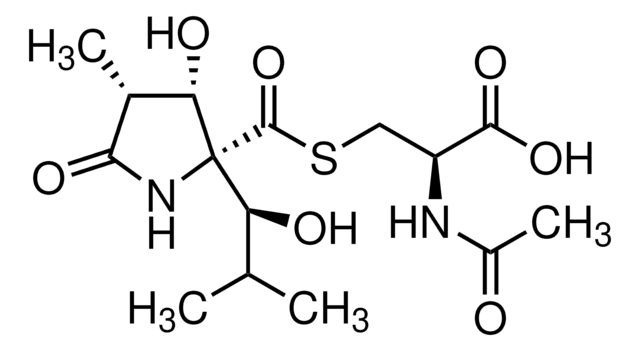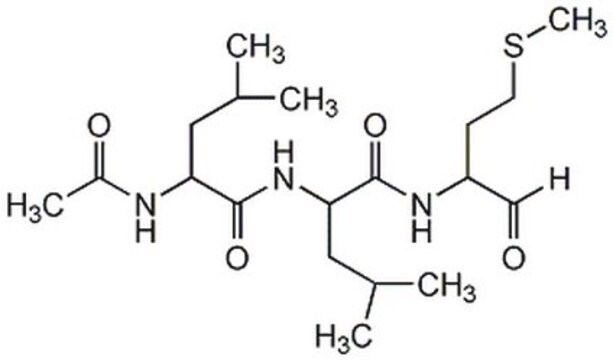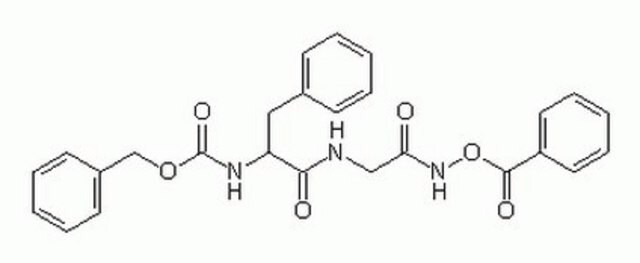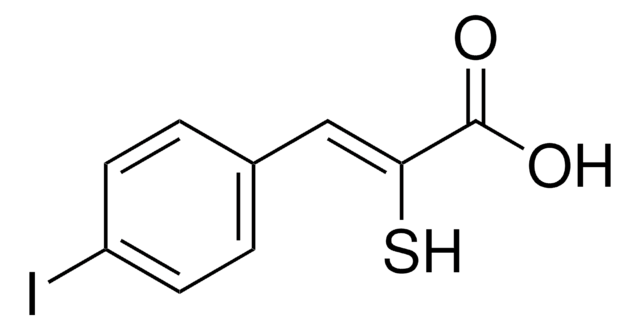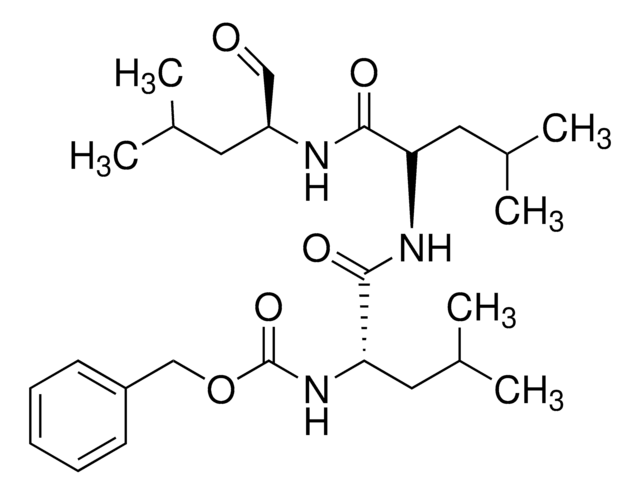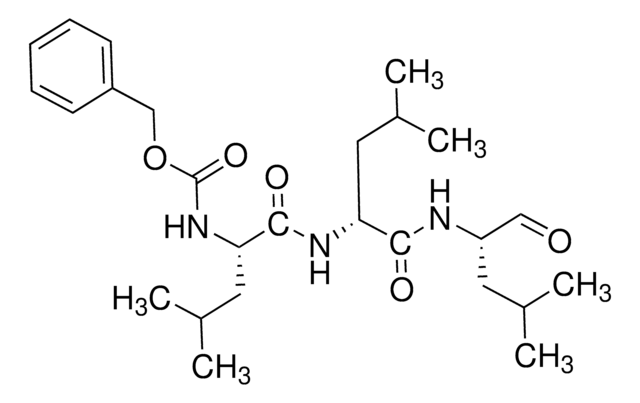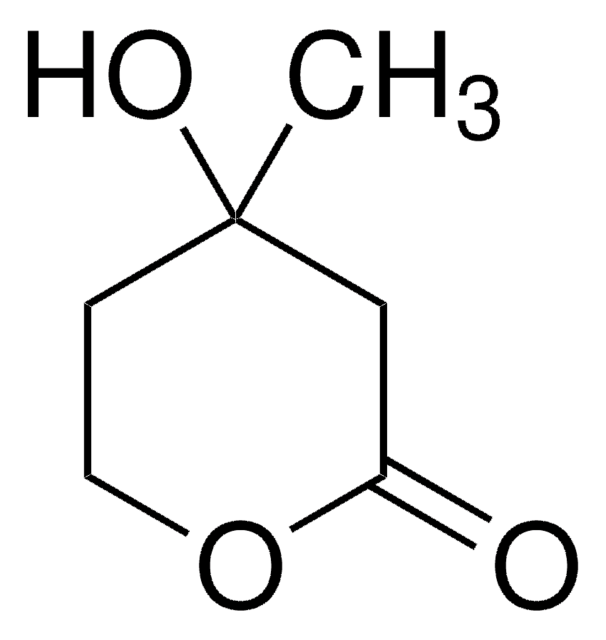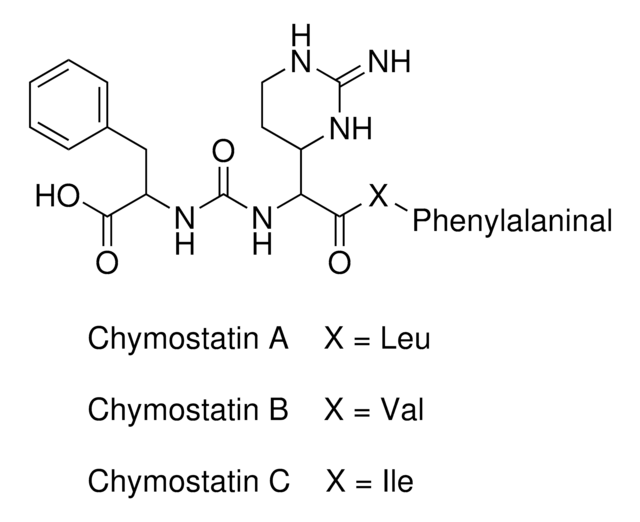208719
ALLN
≥95% (HPLC), solid, calpain inhibitor, Calbiochem®
Synonym(e):
ALLN, LLNL, MG 101, Calpain-Inhibitor I, Proteasom-Inhibitor V
About This Item
Empfohlene Produkte
Produktbezeichnung
ALLN, Cell-permeable inhibitor of calpain I (Ki = 190 nM), calpain II (Ki = 220 nM), cathepsin B (Ki = 150 nM), and cathepsin L (Ki = 500 pM).
Qualitätsniveau
Assay
≥95% (HPLC)
Form
solid
Hersteller/Markenname
Calbiochem®
Lagerbedingungen
OK to freeze
Farbe
white to off-white
Löslichkeit
DMSO: 10 mg/mL
ethanol: 5 mg/mL
Versandbedingung
ambient
Lagertemp.
2-8°C
SMILES String
N([C@@H](CC(C)C)C(=O)N[C@@H](CCCC)C=O)C(=O)[C@@H](NC(=O)C)CC(C)C
InChI
1S/C20H37N3O4/c1-7-8-9-16(12-24)22-19(26)18(11-14(4)5)23-20(27)17(10-13(2)3)21-15(6)25/h12-14,16-18H,7-11H2,1-6H3,(H,21,25)(H,22,26)(H,23,27)/t16-,17-,18-/m0/s1
InChIKey
FMYKJLXRRQTBOR-BZSNNMDCSA-N
Allgemeine Beschreibung
Biochem./physiol. Wirkung
Calpain-1
Warnhinweis
Sequenz
Rekonstituierung
Sonstige Hinweise
Zhang, L., et al. 1999. J. Biol. Chem.274, 8966.
Milligan, S.A., et al. 1996. Arch. Biochem. Biophys. 335, 388.
Griscavage, J.M., et al. 1995. Biochem. Biophys. Res. Commun. 215, 721.
Squier, M.K., et al. 1994. J. Cell Physiol.159, 229.
Rami, J. und Kreiglstein, J. 1993. Brain Res.609, 67.
Sherwood, S.W., et al. 1993. Proc. Natl. Acad. Sci.USA90, 3353.
Vinitsky, A., et al. 1992. Biochemistry31, 9421.
Sasaki, T., et al. 1990. J. Enzyme Inhib. 3, 195.
Rechtliche Hinweise
Lagerklassenschlüssel
11 - Combustible Solids
WGK
WGK 3
Flammpunkt (°F)
Not applicable
Flammpunkt (°C)
Not applicable
Analysenzertifikate (COA)
Suchen Sie nach Analysenzertifikate (COA), indem Sie die Lot-/Chargennummer des Produkts eingeben. Lot- und Chargennummern sind auf dem Produktetikett hinter den Wörtern ‘Lot’ oder ‘Batch’ (Lot oder Charge) zu finden.
Besitzen Sie dieses Produkt bereits?
In der Dokumentenbibliothek finden Sie die Dokumentation zu den Produkten, die Sie kürzlich erworben haben.
Kunden haben sich ebenfalls angesehen
Unser Team von Wissenschaftlern verfügt über Erfahrung in allen Forschungsbereichen einschließlich Life Science, Materialwissenschaften, chemischer Synthese, Chromatographie, Analytik und vielen mehr..
Setzen Sie sich mit dem technischen Dienst in Verbindung.